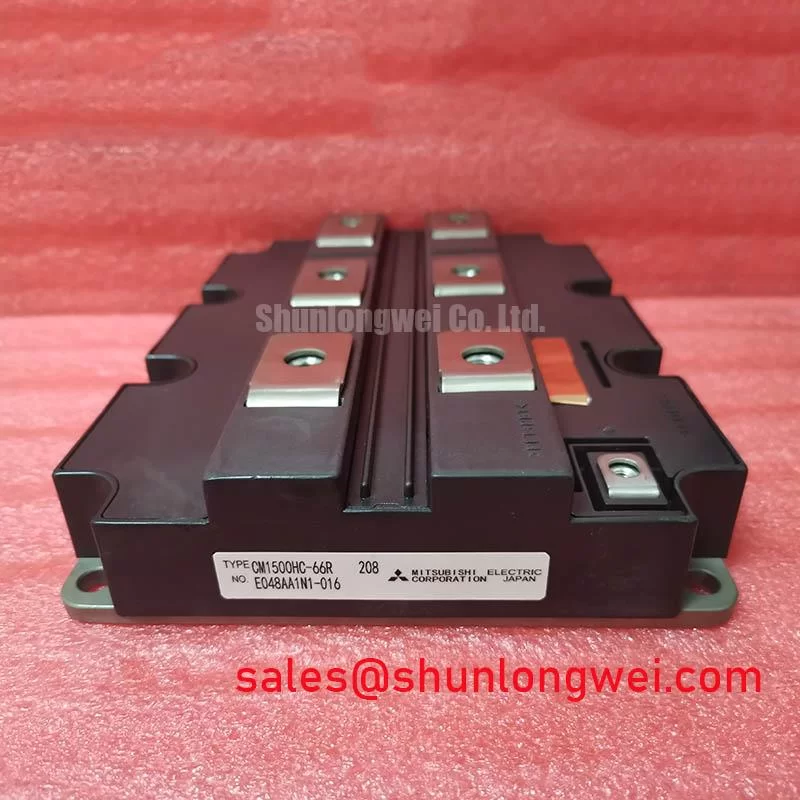With the electronic industry’s rapid shift towards high-efficiency power management, IGBT modules are playing a pivotal role in advanced motor controls, renewable energy systems, and industrial automation. Today, we focus on two outstanding Mitsubishi IGBT modules—the CM1500HC-66R and the CM400HC6-24NFM. Through a detailed comparison of their technical parameters, core features, and real-world applications, this article supports purposeful decision-making for procurement managers, engineering professionals, and system integrators in the industrial electronics arena.

The CM1500HC-66R stands out for its remarkable collector-emitter voltage VCE(sat) rating of 3300V (with a peak capability of 6000V) and a continuous collector current of 1500A, scalable up to 3000A at pulse operation. This robust module is built to handle vast power loads, offering an impressive 15,600W collector power dissipation, making it suitable for highly demanding industrial motor drives, large servo amplifier systems, and uninterruptible power supplies.
In contrast, the CM400HC6-24NFM is engineered for mid-to-high power environments, featuring a 1200V VCES and 400A collector current (with a peak of 800A). Its power dissipation tops at 2710W, which lends itself to slightly less intense industrial applications, such as UPS systems, induction heating, and battery-powered supplies requiring robust yet compact IGBT modules. Its 370g lightweight design and isolated baseplate simplify thermal management and system assembly, contributing to highly efficient system integration.

The CM1500HC-66R incorporates a converter diode bridge and dynamic brake circuitry, supporting sophisticated inverter strategies. Its soft recovery diode design enhances energy efficiency and reduces switching noise, highly desirable in sensitive servo drive and power conversion scenarios. The module’s low VCE(sat) reduces conduction losses, directly improving system efficiency—a key metric in energy-intensive industries and the build-out of green energy and smart grid infrastructure. Click for further details on IGBT technical fundamentals.
Meanwhile, the CM400HC6-24NFM offers a discrete super-fast recovery free-wheel diode, delivering high efficiency in hard-switching environments (15-30kHz). Its isolated baseplate ensures safe and straightforward heat sinking—a substantial gain for modular, maintenance-friendly industrial installations. Additionally, the module is part of the advanced NFM series, prioritizing low drive power and reduced switching losses for mid-scale industrial builds. Explore more about the latest SiC module advancements driving these classes of IGBT modules.
In terms of performance, the CM1500HC-66R is designed for extreme load scenarios, tolerated by an operational junction temperature of up to +150°C and a storage range of -40°C to +125°C. Its engineered mounting specification ensures strong mechanical stability and safety in harsh environments. Such modules are emerging as the linchpin in the latest electric vehicle (EV) rapid charging infrastructure, as well as heavy-duty industrial motor controllers—a segment rapidly advancing thanks to robust investments from industry leaders such as Infineon and STMicroelectronics.
The CM400HC6-24NFM, while not built for the highest current densities, provides an ideal compromise where space, modular expandability, and reliable mid-range power handling are primary. Its high isolation voltage (2500V) and the facilitation of easy heat management make it a top choice for distributed power electronics in modern data centers, variable frequency drives, and innovative induction heating applications now demanded by precision manufacturing sectors.
CM1500HC-66R – Strengths:
Ultra-high current/voltage handling, excellent dynamic braking support, and reduced switching losses allow this module to excel in demanding, high-powered systems. The integrated design minimizes system complexity where both inverter and braking are required, delivering a compact, multi-function solution.
Limitations: The trade-off for such power is larger physical size and more rigorous cooling requirements. Its higher cost positions it mainly for mission-critical or large-scale equipment rather than cost-sensitive designs.
CM400HC6-24NFM – Strengths:
High-frequency, fast recovery design, flexible mounting, and lower power drive requirements render it adaptable for compact, modular power electronics. This aligns well with trending industrial needs, such as modular UPS systems or scalable induction heating solutions.
Limitations: Its current and voltage rating restrict its use to medium-scale operations and exclude some of the most power-intensive applications addressed by modules like the CM1500HC-66R.
The IGBT module landscape is fast-evolving, with advances in SiC (Silicon Carbide) and GaN (Gallium Nitride) technologies pushing the boundaries of efficiency, thermal stability, and switching speeds. While offerings like the CM1500HC-66R and CM400HC6-24NFM remain indispensable for legacy and evolving industrial platforms requiring high reliability and established performance, new product introductions by market frontrunners—including Mitsubishi’s expansion into high-frequency power modules for renewable energy and automotive sectors—mark the future trajectory.
Notably, research and collaborations among semiconductor majors are fostering breakthroughs in higher power density IGBT modules, which now integrate advanced cooling and digital diagnostics for predictive maintenance. These advances, alongside the miniaturization enabled by newer materials, are enabling smarter, greener, and more resilient infrastructure in smart grids, e-mobility, and data center power networks.
The selection between the CM1500HC-66R and CM400HC6-24NFM must weigh both technical and operational requirements. For applications requiring sustained extreme current or voltage (such as heavy industrial drives or large-scale renewable energy storage), the CM1500HC-66R’s higher power profile is essential. Alternatively, for modular distributed systems, data center power, or flexible factory automation where efficiency at moderate power is key, the CM400HC6-24NFM presents a cost-effective, scalable alternative.
Before finalizing component choice, consult the full range of industrial IGBT solutions to ensure the best alignment with your performance, thermal, and installation priorities.
As the evolution of high voltage IGBT modules continues to intersect with the advent of SiC/GaN technologies, stakeholders in power electronics must embrace a dual focus: legacy compatibility and forward-looking adaptability. Decision-makers should stay attuned to industry news on mass adoption of these next-gen devices in smart grids, electric vehicles, and automation—areas where innovative IGBT designs are breaking new ground and establishing real value in reliability, efficiency, and long-term operational savings.